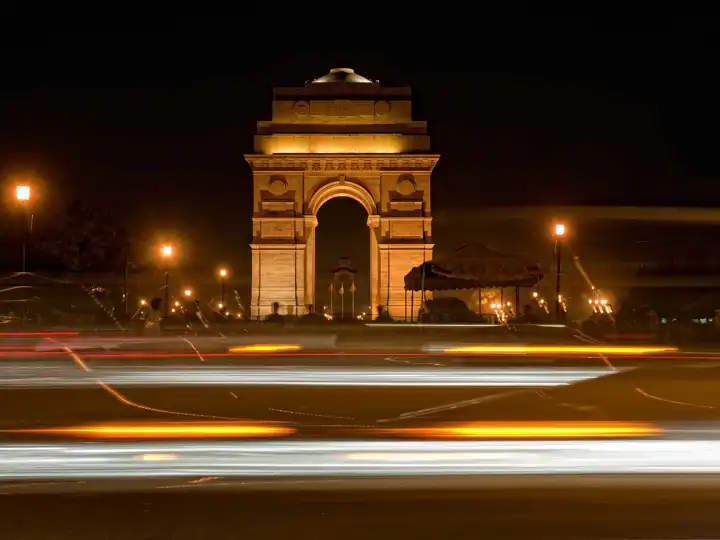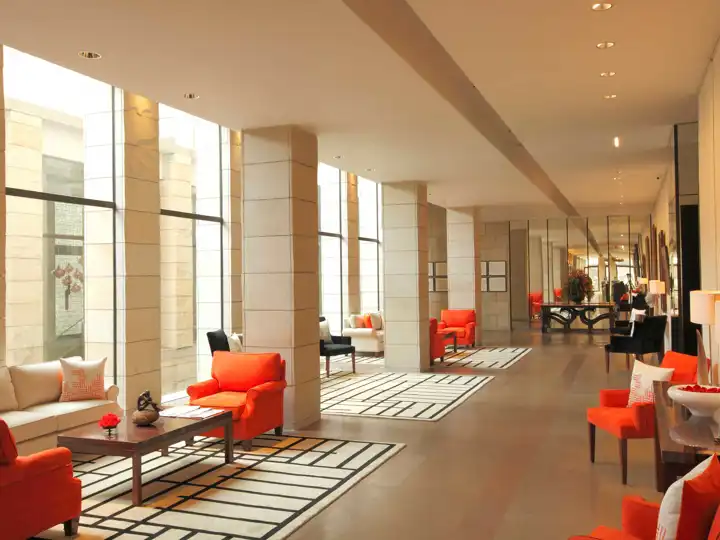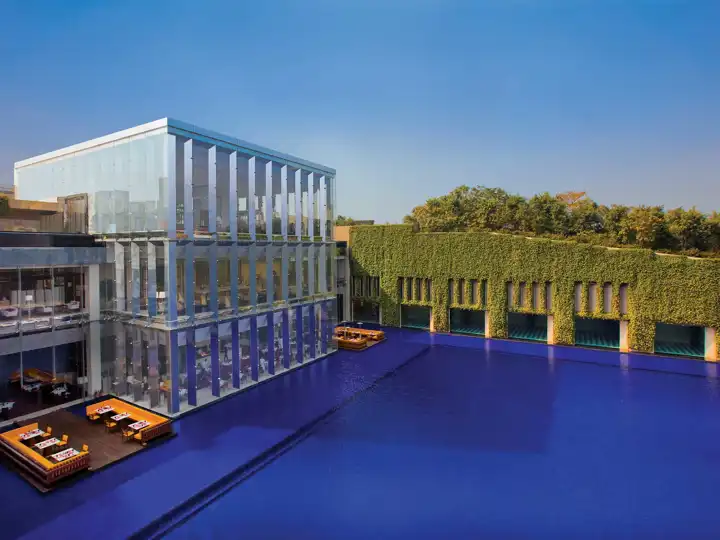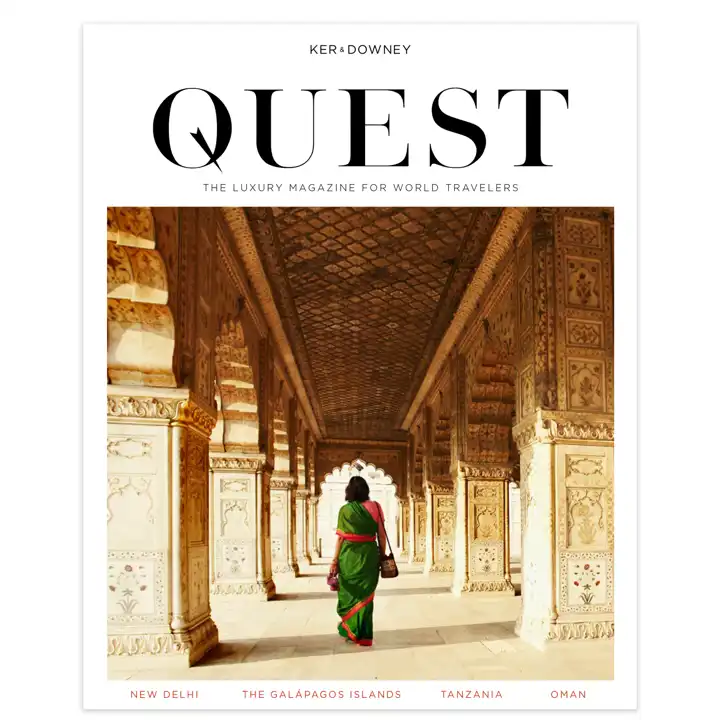New Delhi Now
India's Colorful Captial
A rickshaw ride through Old Delhi allows the kind of historical and present day sensory overload you really cannot experience anywhere else on planet earth. My guide, Ashok Sharda, tells me the story of this city, which houses India’s executive, legislative and judicial branches.

Pristine tree-lined streets, official buildings and precious monuments give way to crumbling apartments and a chaotic cocktail of the human experience with tangled electrical cables and wires obstructing any sightlines to the sky. He also explains that in Delhi, there are two beginnings. This drive-by history lesson casts its spell, as I am here for a glimpse of the modern day aftermath of the second chapter, when New Delhi was established in 1911 and built into a masterpiece by British architect Sir Edwin Lutyens. I wanted to see Delhi’s fresh face. With the second largest GDP in South, West and Central Asia and a population of over 23 million, this is the actual city that never sleeps.
A Scene
I make my entrée into the mix with a stay at The Lodhi, a stone’s throw from the famed tomb of Mughal emperor Humayun, the learned, 16th century, Renaissance-style leader who considerably expanded his empire and infused the culture with Persian influences due to a brief wartime exile in Persia. Over the last two years, the hotel has remade its former identity of an ultra-exclusive Aman Resorts property into a unique and approachable concept that feels more like a club or artists’ salon. Here diplomats, expats, young techies and businessmen join in the lively conversations of fashion designers and novelists over classic cocktails in the art-clad Library and Cigar Lounge. The vibrant, eclectic atmosphere is largely attributed to the husband and wife management team, Delhiite Manav Garewal and Robyn Bickford, a Kiwi expat and former diplomat with a quick wit. The convivial pair ran the hotel as part of the Aman brand, from 2009 until it was sold back to its original owner in early 2013. They immediately make me feel at home, swinging me in to drinks with other hotel guests and regulars who come back to this place time and again for the company and conversation as much as they do for the five-star, seven-acre spread of 40 rooms (including 28 apartments). It’s intoxicating and fun to experience this cross section of Delhi’s movers and shakers, who offer up tons of insider bits, from where to score a chic pair of sunglasses to the city’s best new art galleries.

Throughout, the hotel walls feature a revolving exhibition of contemporary Indian sculpture and artworks—all for sale—curated via collaboration with influential gallerist Sharan Apparao of Chennai’s innovative Apparao galleries. Built like a fortress, the property retains signature Aman touches in its interior architecture that lend to an elegant sort of privacy in a labyrinthine layout of cut-out stone walls and soaring windows, which act as “screens” and maintain an air of seclusion.
Signature upscale eatery On the Waterfront dishes European and Asian specialties in a chic, airy dining room featuring two open kitchens and nestled next to a sleek water feature. Intimate and easygoing, casual Elan serves a selection of Indian classics as well as Western comfort foods and inspired Mediterranean cuisine. It’s the place to read the paper over breakfast or grab an al fresco, afternoon snack. It isn’t unusual for the chef to pop by your table for a quick chat about what you crave, and then create something off-menu to your taste. A little under the weather upon my arrival, he whips up a restorative vegetable soup and sends it up, piping hot, to my room.
Complete with a private plunge pool and silk upholstered outdoor lounging bed, my digs high above the fray offer end-to-end views of the city’s green treetops, ordered and symmetrical streets and clusters of buildings through the pinkish filter of sunset. I step onto the wraparound porch for a closer look to see what nearby structures I can recognize from past visits— India Gate, Purana Qila and Connaught Place. Even in the still, it’s hard to discern the distinct architecture of “Lutyen’s Delhi” from ancient, UNESCO World Heritage mosques. With a history of population shifts dating back to the sixth century as magnet for people from all over South Asia, and a post-Partition identity as New Delhi (1911), you can only take this place in as a whole, giving in to the undeniable energy of constant evolution and change. I decide to leave the starting point to my capable Ker & Downey guides, who meander with me as I see the sights and do what I love best here—shop. The rest comes naturally, through the amazing cast of characters I meet, for whom New Delhi has become a muse of constant discovery and metamorphosis.
In the morning over breakfast with a group of hotel regulars and Bickford’s friends, I eavesdrop on a conversation between a couple of interior designers marveling over the previous day’s loot, reams of India’s rich textiles. My interest piqued, I extract what information I can to share with my guide. Ever observant, Bickford escapes into the well-appointed hotel boutique and hands me a beautifully hand-bound book, packaged in a pink and cream fabric bag, Fiona Caulfield’s Love Delhi: A Handbook for the Luxury Vagabond. “You’ll need this,” and “You must chat with Fiona.” As always with Delhi, one thing leads to the next. Even after a full day’s immersion in Delhi’s retail heaven—from the exquisite bright, sumptuous silks and hand-embroidered sarees at Ekaya in Defence Colony to heaps of artisanal goods at Fabindia in Khan Market—her words stay with me as I lay, comfortably cocooned at The Lodhi.
A Neighborhood
A thriving business center, the Gurgaon suburb of New Delhi is a burgeoning hot spot, bursting with cosmopolitan restaurants and boutiques, upscale residential real estate and multinational corporate headquarters. Proximity to Indira Gandhi International Airport makes it ideal for business travelers.

The scene stealer of this emerging luxury address is the Oberoi Gurgaon, a 202-room and suite dazzler, which sits on nine pristine, thoughtfully designed acres. In such a crowded city, one really appreciates space. As I check into the Oberoi on a rainy and carnelian red evening, the cavernous, light-filled lobby, decked in white marble floors, stuns me—breathing room at last. Even in my suite, the surrounding picture windows boast a crystal clear panorama of the property, which takes advantage of all manners of reflecting light with its architectural “mirrored” effect. A loft of pigeons plays in the rain, orchestrating their formations against a backdrop of lightning and grey skies. A few meek birds perch in my window boxes, finding a little shelter. At 1,240 square feet, the suite extends that sense of modernity and play, with its clean-lined, colorful design and creature comforts such as a huge, en suite five-fixture bathroom with two vanity counters and extra deep tub and 24- hour private butler service.
The hotel has a private fleet of 18 BMW 7-series vehicles to whisk guests comfortably and safely to appointments and adventures. However, everything one could possibly want is available on-property. The Oberoi Gurgaon’s adjacent luxury retail arcade is destination shopping at its finest with India’s biggest Gucci, offering the brand’s exclusive made-to-measure services. Other residents include Burberry, Jimmy Choo, Bottega Veneta and Canali, as well as an art gallery, hair salon and delicatessen. A true standout, Neel Sutra gets my attention with its raw, minimalist look and unique backstory. For 45 days at a time, the shop focuses on 11 superstar, up-and-coming, and avant-garde Indian fashion designers such as Pankaj & Nidhi and Samanth Chauhan, as well as a selection of very unique sarees and stoles. The curated collections speak to the boutique’s respect for handmade, traditional weaving styles—through a very modern lens.
Each dining experience at the Oberoi takes me on a journey through India. During my stay here, I opt for Indian breakfast at the lavish morning buffet: South Indian dosa, a crisp, delicate crepe made from fermented rice and black lentils, coconut chutney and an array of beautiful curries. At dinner, I am especially captivated by the beautiful, pale palette of seafood restaurant Amaranta, which serves catch of the day from all along the Indian coastline—freshly flown-in deep sea delights from the Indian Ocean and Bay of Bengal—prepared in regional styles of Goa and Kerala. My meal at this showpiece eatery begins with a plentiful bounty of regional breads, herb-infused salts and marvelous chutneys. I am transported to simple pleasures in these lavish environs, enjoying perfectly prepared steamed fish in a banana leaf and sipping vintages from the stellar wine menu.
On my final night, before the long return flight to Los Angeles, I sit at a prime table with a view of five active show kitchens at Oberoi’s Threesixtyone Degrees. A choice of Japanese sushi, wood oven-baked pizza, house-made pasta or indulgent Chinese favorites remind me of the essence of New Delhi as it is and always has been. In a city with such an intensity of historical and cultural realities, to be here, after all, is to be everywhere.

Quest Magazine
Dedicated to the experiential style of Ker & Downey travel, QUEST Magazine features eye-opening content that focuses on unforgettable experience, unheard-of destinations, and the very best our world has to offer. Each issue is packed with insider information, what's new in the world of travel, and editorial pieces that focus on our global culture, philanthropy, and transformative travel.
Read Issue 4
India
Book luxury travel to India with award-winning tour operator Ker & Downey. Our luxury India tour packages are as colorful and charming as the country itself. For even more travel inspiration, follow us on Instagram, Facebook, and Twitter.
Discover India